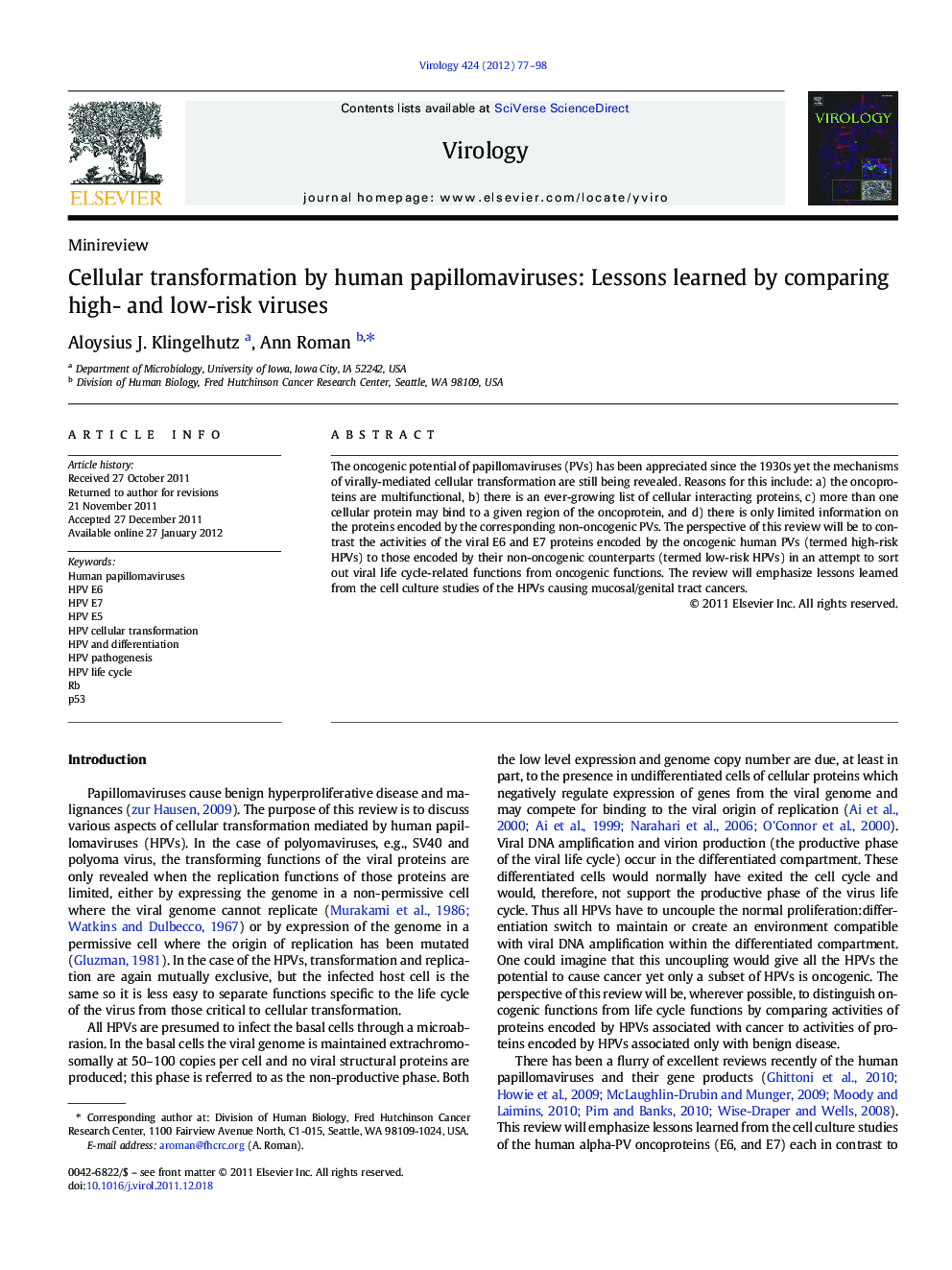| Article ID | Journal | Published Year | Pages | File Type |
|---|---|---|---|---|
| 3424507 | Virology | 2012 | 22 Pages |
The oncogenic potential of papillomaviruses (PVs) has been appreciated since the 1930s yet the mechanisms of virally-mediated cellular transformation are still being revealed. Reasons for this include: a) the oncoproteins are multifunctional, b) there is an ever-growing list of cellular interacting proteins, c) more than one cellular protein may bind to a given region of the oncoprotein, and d) there is only limited information on the proteins encoded by the corresponding non-oncogenic PVs. The perspective of this review will be to contrast the activities of the viral E6 and E7 proteins encoded by the oncogenic human PVs (termed high-risk HPVs) to those encoded by their non-oncogenic counterparts (termed low-risk HPVs) in an attempt to sort out viral life cycle-related functions from oncogenic functions. The review will emphasize lessons learned from the cell culture studies of the HPVs causing mucosal/genital tract cancers.
